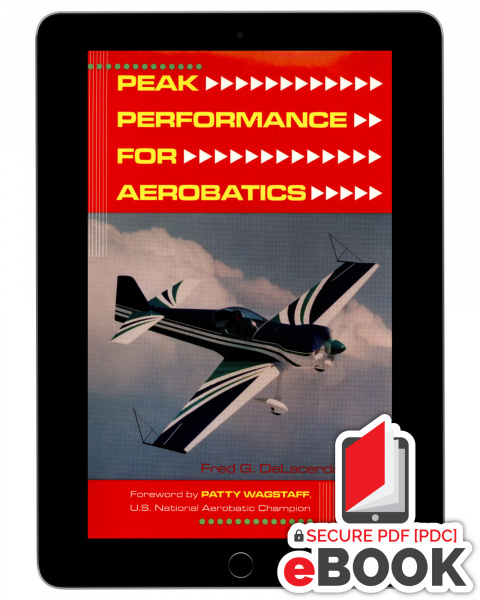

Competition or "Sport" aerobatics is one of the most physically demanding sports, requiring acute situational awareness, split second timing, and the control of a machine in three dimensions. Obtaining peak performance demands dedication and discipline of both body and mind.
Too often, books on aerobatic competition overlook the importance of human factors. Written by a human performance expert with years of practical experience as an aerobatic pilot, this much needed book systematically applies the principles of sport psychology to aerobatic competition, training and flying. A peak aerobatic performance does not just happen, but must be pursued. Peak Performance for Aerobatics describes the elements needed to give direction to the pursuit.
Topics Include:
From the Introduction: By first lady of aerobatics Patty Wagstaff…. "Today's aerobatic pilots have available some of the finest engineered aerobatic airplanes the sport has ever known. Yes, sometimes these airplanes fail, but more often, it is the pilot flying the airplane who fails, and this failure is due to the lack of mental control. In terms of both precision and safety, aerobatics required absolute mental control by the pilot. Excellent book that brings modern sports psychology to the demanding world of aerobatics. Mental training, neurology and energetics are all covered. The mindset of excellence."
About the Author: FRED DeLaCerda, PhD has established himself as a Renaissance man by combining his experiences as a flight instructor with his multi-discipline academic background to write PEAK PERFORMANCE FOR AEROBATICS. As a certificated flight instructor he has a total of over 9,000 hours of flight time which includes 5,500 hours instructing and 3,500 hours of aerobatics. As a competition aerobatic pilot he was the 1994 Intermediate Category National Aerobatic Champion and in 1995 he w as the Intermediate Category International Aerobatic Club Champion, also winning the Pitts Cup as the top scoring pilot regardless of category. Dr. DeLaCerda received degrees in mathematics, engineering, human performance plus two years of post-graduate study in the medical sciences, the objective being the study of sciences in sports. In essence, DeLaCerda wanted to be a sports scientist. It was while instructing private pilot students he realized that learning to fly was the same as learning, both physically and mentally, a sport. This led to the principals of sports psychology, particularly visualization and imagery, being applied to learning to fly. This in turn led to the development of mental skills for flight safety training, particularly recovery of a spinning aircraft. And finally, the application of sciences was directed to the mental aspects of having a peak performance in flying aerobatics.

